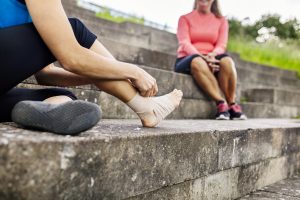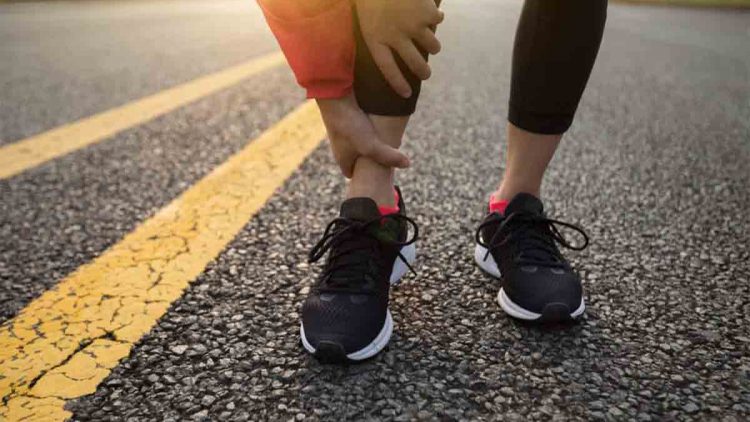What Not To Do With Plantar Fasciitis
WE CARE CHIROPRACTIC
24/7 Emergency Auto Injury Appointments In Glendale, AZ
It’s very important to avoid doing any of the following activities when suffering from pain related to plantar fasciitis.
What Is Plantar Fasciitis?
Plantar fasciitis usually causes pain in your heel and along the arch of the foot. Plantar fasciitis occurs when the soft tissue on the underside of the foot (the plantar fascia) becomes inflamed. The pain is often worse after being inactive or first thing in the morning.
The plantar fascia, which connects the heel to the ball of your foot and toes, is a powerful attachment reminiscent of a ligament. It features the flexibility of a strong rubber band. The foot’s arch is formed by the plantar fascia, which also connects the bones in your foot.
Plantar fasciitis will develop when the plantar fascia is either overextended or overworked. The plantar fascia could enlarge as a result of any related injury. Walking and using your foot will become painful due to the inflammation. Oftentimes, plantar fasciitis will affect one foot at a time, but there are cases where it can attack both feet simultaneously.
What Not To Do With Plantar Fasciitis
If you are suffering from heel pain, you want to ensure you refrain from doing a few things to avoid re-injuring the area. Here is a quick overview of what you should not do with plantar fasciitis.
Do Not Wear Shoes Without Support
Flip-flops, flats, and other shoes that do not feature sufficient support will ultimately make your condition worse. It’s important to also avoid any footwear that puts abnormal pressure on your feet. Flat feet or high arches are conditions that can increase your risk of plantar fasciitis.
Runners will need to wear high-quality running shoes that are designed for their specific needs based on the constant pounding of feet on the ground. Every individual has a different foot type with specific requirements for optimal function. Orthotic inserts are available to provide more shoe support.
Do Not Forget To Stretch
Tight muscles in your feet and calves can irritate plantar fasciitis pain. As you change your gait in order to compensate for muscles tightness, you can develop new aches and pains.
Stretching is perhaps the most effective way to relieve pain associated with plantar fasciitis. Never forget to stretch before any activities.
Do Not Fight Through Pain
Pain is a messenger that lets us know when something in the body or mind needs attention. You cannot simply push through the pain associated with plantar fasciitis.
In some cases, medications like ibuprofen can provide temporary relief. However, taking these medications will only mask the main problem without completely healing it. Pain is your body’s reminder to slow down, rest, and recover.
Do Not Do Any High-Impact Exercises
After pain and discomfort subside, it may be tempting to go right back to your normal exercises and activities. This, unfortunately, only increases your chance of reinjury.
Always start slowly when you choose to get back in the swing of things. Stretch your calves and casually ease into your walks or jogs.
Do Not Delay Treatment
Delaying treatment will only worsen plantar fasciitis over time. If you continue to walk or run with an inflamed plantar fascia, your pain will only worsen.
Prompt treatment of this condition is strongly recommended. Evidence supports that early treatment can help individuals recover faster.
How To Cure Plantar Fasciitis
Soft tissue takes time to heal, but there are a number of things you can do to help speed up the process, including the following:
Regular Exercise: Regular exercise will help to relieve pain by loosening up the soft tissues in your feet. Tightness in the Achilles tendon can often have a knock-on effect on the plantar fascia, so these areas are particularly important to target. Prior to exercising, always make sure you flex your calves, Achillies tendon, and foot soles.
Rest: Resting your feet wherever possible by not running, walking or standing for too long can help to avoid any more inflammation.
Heel Support: Wearing comfortable shoes with good arch support will also reduce the strain on your feet.
Athletic Tape: Taping your feet can support and prevent them from moving in a way that ultimately aggravates plantar fasciitis.
Ice Packs: Ice packs pressed against the bottom of the foot can help to reduce swelling. Do not apply ice directly to the skin; instead, try wrapping the pack in a tea towel.
Night Splints: When individuals sleep with their feet pointed down, the plantar fascia and Achillies tendon are shortened. You can wear night splints while you sleep to help maintain a 90-degree angle for your feet.
Use The R.I.C.E. Method: Resting your foot or feet when the pain begins is a crucial component to recovery. RICE is a first aid procedure commonly used for foot injuries.
The RICE method is as follows:
- R: Rest the area in pain for a few days.
- I: Ice the area for a good 20 minutes to reduce the swelling.
- C: Apply a bandage to the area in order to reduce swelling.
- E: Place a pillow or two beneath your foot to elevate it.

We Care Chiropractic Clinic In Glendale, AZ
We Care Chiropractic Clinic offers Chiropractic Care in Glendale, Arizona. We specialize in providing relief from a wide variety of common chiropractic problems. Contact us today at (623) 825-4444 for more information.
AT WE CARE CHIROPRACTIC, WE GOT YOUR BACK!

